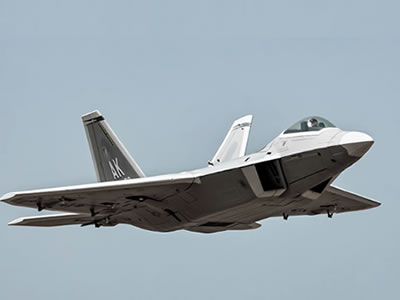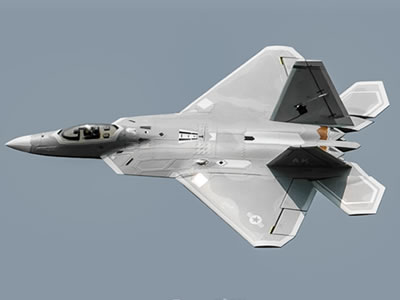Learning how to Fly a Freewing Radio Control Airplane for new hoby freind
I am Mr Josen Zhou from China.I am a member From China Freewing Model Team, We design Freewing planes to survive most accidents.<br />
there are many RC Hobby friend all over the world,welcome to order Freewing RC Jet,The Freewing will make you fly more high amd More Far.
Today i have write a new article for all new friend friens to teach you how to Fly a Radio Control Airplane.
it can hel you.
it takes about 10 hours of flight time for a new flyer to get comfortable flying. Video gamers can often learn faster because they already have some of the reflexes they need. Older students may need a little more time on the simulator and buddy cord time to feel comfortable flying.
This Product is available in stock.
This Product is available in stock.
This Product is available in stock.
we will ship the package within 48 hours after the buyers pay money by paypal.

Freewing F-22 Raptor 70mm EDF ARF Plus RC Jet
Freewing F-22 Raptor 70mm EDF Jet with Gyro PNP RC Jet
Freewing F-22 Raptor 70mm EDF Jet PNP RC Jet
The plane you choose has a lot to do with how fast you can learn to fly. Chose a plane that is appropriate for your skill level. Many flyers learn on our flying wings but most will have less stress and learn faster with one of our slow flying Storm Chaser, Albatross or Pelican.
Fliers under 15 years old can often fly well, but they often don’┐Į’┐Įt have the experience to get safely on the ground without help. They are more likely to fly out of site on the horizon or fly over the spectators or have a bad landing. Stay with them if they are flying until they are comfortable and in control.
If you are having trouble you may benefit from getting a simulator to give you some low stress flying time. Read our article on Simulators for more information.
Don’┐Į’┐Įt try to be the teacher until you are a competent flyer. One of the most awkward moments in the hobby is when your friend’┐Į’┐Įs plane crashes and you are the one holding the transmitter. It may not even be your fault, but they don’┐Į’┐Įt know that. Make sure you go through the pre-flight checklist we have provided if you are helping a new flyer.
How do you hold your radio transmitter? All new fliers want to fly with just their thumbs on the sticks. Don’┐Į’┐Įt do it! Pinch the right stick with your thumb and forefinger. Holding your radio this way gives you two points of reference and helps you know where the stick is. It will also help you control how far you move the stick. When you move the stick too far, the plane starts doing things like snap rolls and stalls and your plane looks like it is jerky in the air. I usually can spot a thumb flyer from across the flying field. It takes a while to get used to holding your transmitter this way but learn to do it. It will help you fly like a pro.
Do not bump the sticks!!! Most movements to maintain controlled flight are just a gentle smooth pressure on the stick with very little movement at all. MOST NEW FLYERS WANT TO MOVE THE STICKS TOO FAR!!!! This is especially important on landings. Hold the weight of the transmitter with the sides of your hands. Use a neck strap if you wish.
There is a reflex most new flyers have, I call the ’┐Į’┐Įdeath roll’┐Į’┐Į. It happens when you get right and left mixed up, especially when you are flying toward yourself and the plane drops it’┐Į’┐Įs nose and spirals into the ground. I’┐Į’┐Įve never taught anyone that didn’┐Į’┐Įt do it at least once. It is a reflex that you have to learn to overcome. A good teacher on a buddy cord, and a little time on a flight simulator, can save you from most accidents and repairs.
You have to learn to control the plane, instead of letting it control you. Imagine you are flying in a box. This box is in front of you, and is about 300 feet wide and 300 feet deep and 300 feet tall. Picture it in your mind. KEEP YOUR PLANE IN THE BOX! Do not let the plane go behind you or over your head. Don’┐Į’┐Įt just react to what the plane is doing, but make the plane fly where you want it to go. Keep the plane moderately high in the sky and close while you are learning. You should be looking up. New fliers seem to want to fly low and too far away on the horizon where the planes are hard to see. If you can’┐Į’┐Įt see it, you can’┐Į’┐Įt fly it.
This Products is available in stock.
This Product is available in stock.
This Product is available in stock.
we will ship the package within 48 hours after the buyers pay money by paypal.
’╗┐
This Product is available in stock.
This Product is available in stock.
This Product is available in stock.
we will ship the package within 48 hours after the buyers pay money by paypal.
 You have to learn to control the plane, instead of letting it control you. Imagine you are flying in a box. This box is in front of you, and is about 300 feet wide and 300 feet deep and 300 feet tall. Picture it in your mind. KEEP YOUR RC PLANE IN THE BOX! Do not let the plane go behind you or over your head. Don’┐Į’┐Įt just react to what the plane is doing, but make the plane fly where you want it to go. Keep the plane moderately high in the sky and close while you are learning. You should be looking up. New fliers seem to want to fly low and too far away on the horizon where the planes are hard to see. If you can’┐Į’┐Įt see it, you can’┐Į’┐Įt fly it.
You have to learn to control the plane, instead of letting it control you. Imagine you are flying in a box. This box is in front of you, and is about 300 feet wide and 300 feet deep and 300 feet tall. Picture it in your mind. KEEP YOUR RC PLANE IN THE BOX! Do not let the plane go behind you or over your head. Don’┐Į’┐Įt just react to what the plane is doing, but make the plane fly where you want it to go. Keep the plane moderately high in the sky and close while you are learning. You should be looking up. New fliers seem to want to fly low and too far away on the horizon where the planes are hard to see. If you can’┐Į’┐Įt see it, you can’┐Į’┐Įt fly it.
Do not fly over houses or cars or people. Do not fly over people participating in sports, or you and all of the other flyers may get kicked off the field and loose a flying site. You do not want to take the chance of crashing and hurting someone. The coaches will complain to the city if you are distracting their players
Do not bump the sticks. May I repeat, DO NOT BUMP THE STICKS. When you are flying a plane, make corrections by moving the sticks smoothly and hold them until the plane reacts. Don’┐Į’┐Įt move the sticks too far. I can spot a stick bumper from a half mile away. When you drive a car, you don’┐Į’┐Įt yank the steering wheel around or you will loose control. The same is true with RC planes. Erratic movements of the stick will make you feel like the plane is out of control, because there is a slight delay in the plane’┐Į’┐Įs response to the command, so it doesn’┐Į’┐Įt feel coordinated with what you are doing.
Make sure you practice making both right and left turns equally. You will find turning one way is easier than the other when you are learning. When you make turns, learn to keep the nose of the plane pointed at the horizon and don’┐Į’┐Įt lose or gain altitude. Flying flat and level in wind and on landings can be more difficult than flying aerobatics.
Once you get some confidence, and you want to test yourself to see if you are really flying or just moving the stick to keep from crashing, try flying a smooth figure-8, ten feet off the ground. Try this at different speeds. If you think you are ready, try it inverted.
At some point, you will lose a plane. Then you’┐Į’┐Įll have to go find it. Make sure you put your address and phone number in a conspicuous place on every plane you fly, so that if it’┐Į’┐Įs found, someone can get it back to you.
If you’┐Į’┐Įre going down, try to watch as the plane gets close to the ground to see if it is behind or in front of things like trees or hills or power lines. The trick to recovering the plane is to stand in one place and point at the spot where you think the plane ended up and then line up two points to make a line to get you to the downed plane. Try to choose markers that you can see from a distance or come back to if you still can't find the plane. If you are flying over farm fields or brush fly with a long streamer on your plane to help you find the plane when it is down.
Finally, like I said, don’┐Į’┐Įt get frustrated. The best way to get better at flying is to just keep flying. Be safe, and learn from your mistakes, but have fun
This Products is available in stock.
This Product is available in stock.
This Product is available in stock.
we will ship the package within 48 hours after the buyers pay money by paypal.






